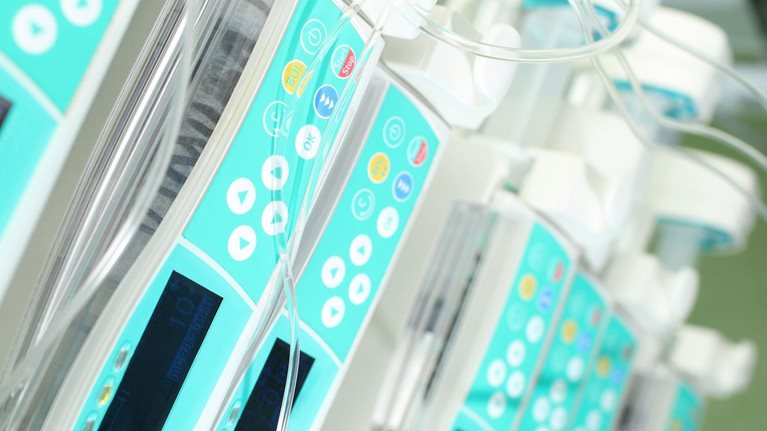Every year, as part of their strategic planning, executives’ minds turn to setting performance targets—and then achieving them. In so doing, those at medical-device companies should bear in mind the high hopes shareholders have for future growth. Can these hopes be met?
Stay current on your favorite topics
The global medical-device sector has performed well in recent years, recording average total returns to shareholders (TRS) of 18 percent a year from 2011 to 2016, compared with 15 percent for the S&P 500. A subset of the largest medical-device companies also outperformed the S&P 500 over this time frame, averaging 15.5 percent TRS (Exhibit 1). Returns for the largest companies can be attributed to three value drivers. First, the earnings yield in medtech is attractive (contributing 35 to 40 percent of the TRS compound annual growth rate, or CAGR) because the sector would deliver healthy returns on investment capital even if it were not able to grow. Second, almost a third of the TRS CAGR was due to the revenue growth that medtech companies attained, much of which was achieved inorganically—more than 60 percent of the growth of the largest medtech players is due to M&A, net of divestitures. This also explains the high rate of investment needed to achieve this growth (for the largest medtech companies, goodwill accounted for almost 90 percent of the investment required to do so), which more than offsets the growth and margin-expansion contribution in the TRS CAGR. Third, the majority of the TRS performance (55 to 60 percent) can be attributed to improved growth expectations. That includes the expectation that the large deals that medtech companies have done over the past couple of years will eventually start delivering positive returns. Continuing to deliver on shareholders’ expectations presents companies with a substantial challenge.

On average, analysts forecast that revenue at large medical-device companies will grow by between 4 and 5 percent a year over the next few years, considerably more than the 2 percent overall annual market growth recorded over the past five. How can this be achieved and shareholder value created, especially when pressure on prices is rising and many large product categories, such as orthopedics, are becoming increasingly commoditized?
Would you like to learn more about our Life Sciences Practice?
We analyzed 30 different business and financial variables for their statistical importance in affecting growth and TRS over ten years. And we found, perhaps not surprisingly, that the companies with the largest share of sales in fast-growing, innovative market segments, such as electrophysiology and neurovascular, were those most likely to sustain high growth rates and to be rewarded accordingly by the markets. In other words, for most companies, portfolio composition (where to operate) is the strongest determinant of TRS performance. We found that it’s twice as powerful as capturing market share from competitors and that M&A, particularly large deals, typically reduces overall TRS.
But therein lies the challenge, as the portfolios of larger medical-device companies today tend to be weighted toward more mature market segments than the device market as a whole. Moreover, the opportunities to shift the portfolio toward high-growth areas are limited. To begin with, high-growth segments—which we classify as segments in which sales are expected to grow by 6 percent or more a year for the next five years—made up around 12 percent of global market sales in 2016, down from some 20 percent in 2011 (Exhibit 2). In addition, these high-growth segments are already consolidated: in each of these segments, around 70 percent of sales are already in the hands of the top three companies in the segment, most of which are top 30 medical-device companies by revenue. Therefore, accessing these high-growth segments will be hard without large-scale M&A.

So while for a few companies a big M&A deal might be the key to reshaping their portfolio, most will have to look for other ways to do so. The starting point is to take a realistic look at the business, knowing that growth is the key to value creation and portfolio composition is the key to growth. Will the current portfolio deliver the desired growth? Are the areas driving growth today sustainable over time? If the answers to these questions are no, bold action may be required to refocus the portfolio, including measures such as the following:

Capturing the value of good quality in medical devices
- Reallocating resources away from low-growth divisions and toward high-growth segments and projects, which will be harder to come by as the number of high-growth segments becomes an even smaller share of the medical-device market.
- Divesting or spinning out large but slow-growing divisions, a move that can boost the overall growth rate more than making a similar-size acquisition (for example, Johnson & Johnson’s divestment of Ortho-Clinical Diagnostics and Cordis, or Medtronic’s divestment of its medical-supplies business to Cardinal Health).
- Refocusing and concentrating internal R&D spending on truly game-changing innovations capable of delivering revenue opportunities of $500 million or more, rather than those that will deliver only incremental improvements.
- Rationalizing the corporate venture-capital portfolio to focus on opportunities with the biggest short-term revenue potential. The traditional corporate venture-capitalist approach, followed by the venture arms of many medical-device companies, of placing many smaller bets—which may deliver some financial returns—usually does not deliver on growth aspirations at the scale required to shift overall portfolio growth meaningfully.
The bold reshaping of portfolios can go a long way toward accelerating growth—although it is unlikely to deliver on the heady targets to which some companies still aspire. For the average top 30 company to grow at 6 percent per year, for example, it would have to generate around $3 billion of annual new revenue over the next five years, the equivalent of building an operation to rival one of today’s top 30 medical-device companies. And we are not suggesting that reshaping the portfolio is the only lever. Other measures, such as expanding geographically or using data and digital technologies to move into new, adjacent businesses, such as services and solutions, might be needed, too. However, the clear link between the composition of a portfolio and value creation makes reshaping the portfolio an imperative consideration for strategic planners.


